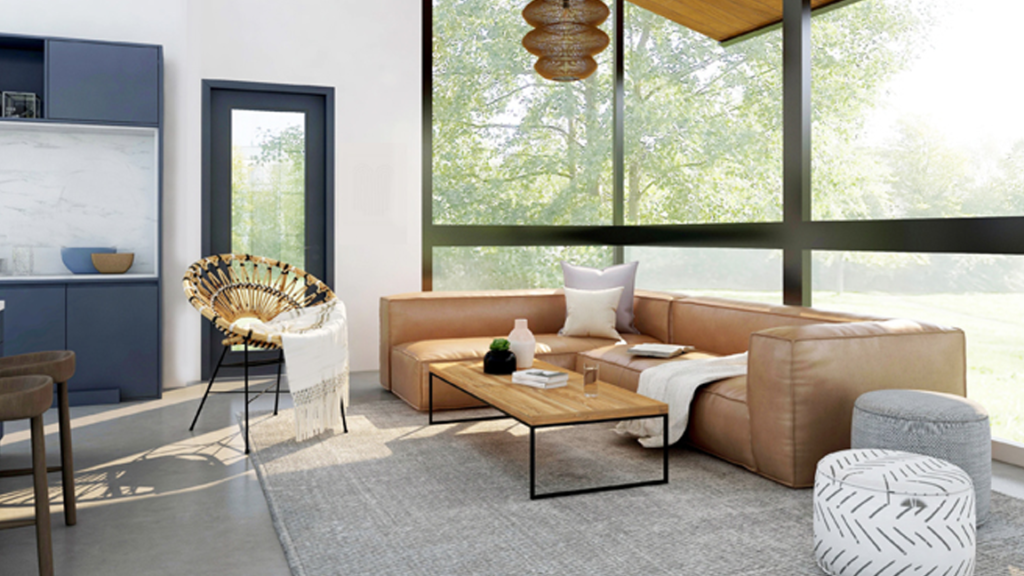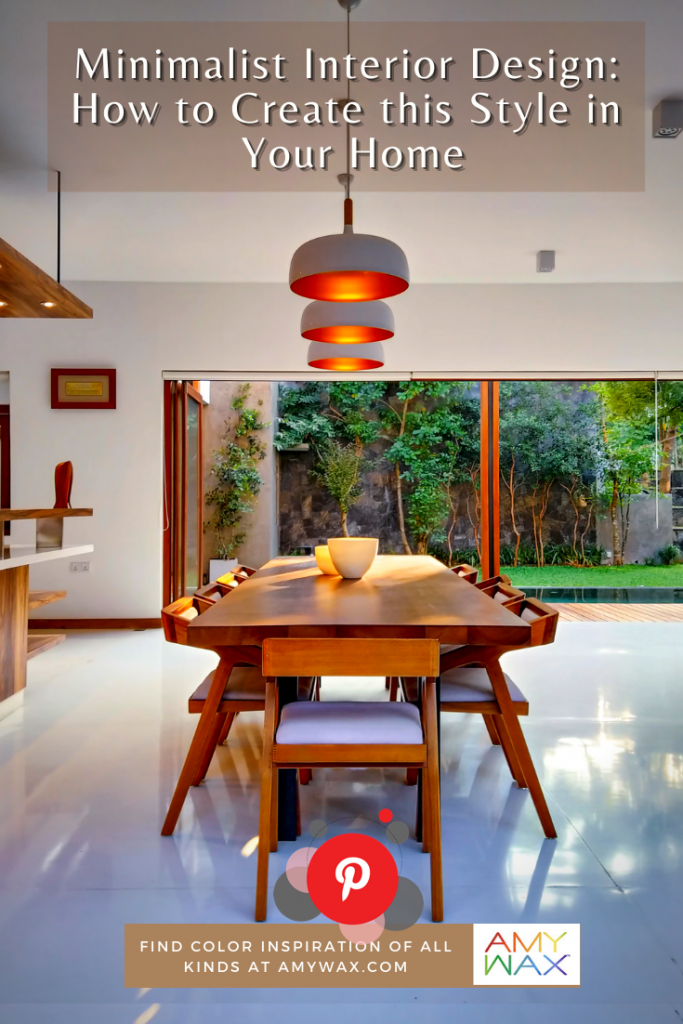
When homeowners decide they need a fresh start and new a look to their home or a few rooms at the very least, they’ll generally look around online or in design magazines for inspiration. In recent years, there has been a tendency to “declutter” the home and choose a minimalist interior design approach. But, what exactly is a minimalist interior design?
What makes minimalist design really sing? How do you make this work with fewer design elements in the room? Read on; this will be interesting!
Another thing to think about is, does everyone’s home work with the minimalist interior design style? Do you need certain types of furniture and colors throughout the home to capture the minimalist look? Or, is it simply the exercise of removing items from your home and keeping only the essential belongings around?
These are all great questions, and as a color expert and interior paint consultant, I hear questions like these a lot. So, let’s clear the air and discuss what it means to have a minimalist interior design and whether this design motif is right for your home!

This approach to design is quite simple; minimalist interior design aims to strip a room down to its bare essentials to be functional and uncluttered. Minimalist interior design is often associated with the minimalism movement that started not long after World War II.
As we often talk about the emotional intention of the space, a minimalist design concept works to soothe and calm the mind by removing all clutter that can create anxious, chaotic, and overwhelming feelings when walking into a space.
Less is More
The details of a minimalist space are typically meant to showcase light, openness, and materials. For example, someone with a spacious loft in Boston, New York City, or Chicago would opt for a minimalist design scheme to maximize the space’s size while drawing attention to its colors and textures. People entering the space would direct attention to marble countertops, exposed brick, brushed metal appliances, or even statement lighting.
It’s really about embracing clean and strongly defined lines throughout the home; this includes the furniture and architectural layout.
Suppose the same space is decorated with lots of intricate, delicate, ornate pieces of highly decorative furniture, ornamental pieces, design elements, and soft furnishings. In that case, it will defeat the goal of creating an airy and open space.
Often there is one element that really stands out.
When this style is done well, I often find one element that really makes your heart sing. It could be a dramatic light fixture, a colorful piece of art, maybe even an unexpected splash of color or texture. It could even be fresh flowers in an all white interior. Stripped down to the minimal number of pieces in a room, you have the opportunity to see each piece without being distracted. Add an element that stands out, and it can really complete the minimalist design in your home.
Simple and Monochromatic Color Palettes
A minimalist interior design is about reducing colors, structures, and forms to their simplest state of being, which is why you will not find elaborate or vivid color palettes in a home with a minimalist design scheme.
Monochromatic color palettes are most often used in minimalist design schemes. You will see soft shades of whites, grays, and sometimes blues and other nature-inspired neutral tones.
Exposed wood is very popular for minimalist interior design, so you could also expect to see an oak or maple hardwood floor with a light dye and stain to give it a soft and nonabrasive feel.
For some people, the design, goals, and philosophy of owning a home with a minimalist interior is completely off-putting. To the inexperienced eye, it can seem cold, austere, and industrial.
Although that is not the intended feeling for minimalist design, it can differ from what someone with a cozy and ornate home is used to, making the space feel empty, as if it has no soul.
Minimalist interior design can indeed risk feeling cold and sterile, which is why it’s important to have warm elements included in your design, which can add comfort without cluttering up space. This can be accomplished by incorporating many different textures and warm accent colors here and there, ensuring that the space is not cold and vapid.
As a color specialist, I get lots of clients wondering what design schemes will work best for their home’s interior. As a minimalist design scheme has been popularized in many home renovation shows and famously by Marie Kondo’s lifestyle tips, many homeowners wonder if this interior design scheme will work for them.
What I will say is this, think about your home’s history, its design, and how it makes you feel when you walk room-to-room. Many of us can feel frustrated with the clutter and wide range of stuff our homes can collect. But, building out a minimalist interior design scheme is different from decluttering your home.
I suggest thinking of how this design style will work with your possessions and what will be the focal point of your home. Basically, ask yourself what will be the eye candy that makes you happy!
If you have a gorgeous 19th century victorian home with ornate details throughout, a minimalist interior design approach will draw attention to the woodwork and architectural features. Even though this is not a traditional victorian approach, it might be just the style you are looking for!
Suppose you live in an ultra-modern condo in an urban setting. In that case, a minimalist interior design will draw attention to the open spaces and clean lines in the design of your rooms, and without much effort, this might work beautifully with the layout of your rooms. With a simpler interior design, it will certainly be an easier fit. Again, think about what you want to focus on in your home; would you like to focus on the architectural details or the clean open spaces and open views from one room to the next?
If you’re interested in minimalist design, you can try it out for one or two spaces in your home before committing to it completely.
Remember, interior design is about matching your tastes and desires with the space’s emotional intentions. Don’t force a design scheme that doesn’t feel right to you!
Please reach out with any questions you have regarding interior design and color inspiration!